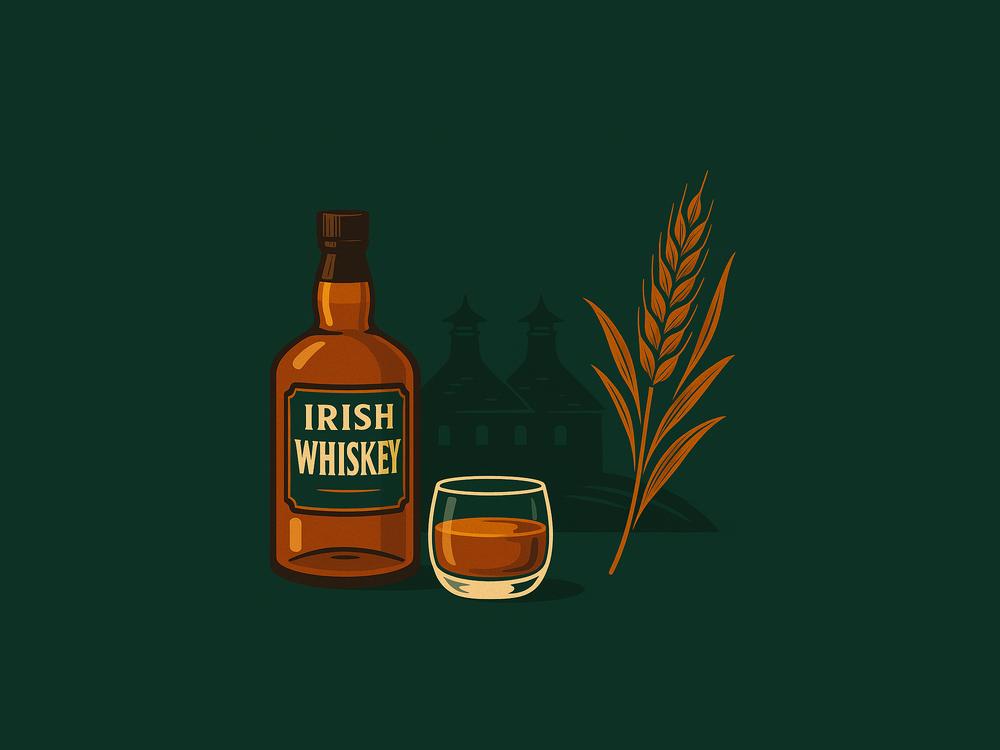Irish Whiskey Gets a Hangover

Published November 3, 2025 by Evan Rail (retold)
Contents
For a long while, Irish whiskey was the sort of tale people told in pubs when they needed cheering up. It was the plucky young underdog that got up off the mat, dusted itself off, found a barrel, and said “Right, let’s try that again, only this time with better marketing.” The Americans loved it, of course. Americans like a good comeback story, preferably bottled at 40 percent and shipped by the crate.
Sales soared, the U.S. drank up most of it and new distilleries appeared faster than anyone could remember the Gaelic for “limited release.” But after 15 years of growth so steady it began to look permanent, the industry has walked directly into what economists call “a situation” and what everyone else calls “oh no, not now.”
Exports tanked, distilleries shut up shop, and the headlines went full doomsday because misery always sells more papers than balanced analysis. The sky is not falling, for now, it remains attached, but it is leaking a bit.
The Boom Before the Bruise
In 2010, Ireland had four whiskey distilleries, which barely counts as an industry and is really closer to a polite social club with shared hobbies and a rotating responsibility for bringing biscuits. By 2024, there were fifty of them, ranging from the towering, world-famous sort that need visitor centers and car parks, to the sort run by three people, a dog, a manifesto, and a barrel count best described as “modest but enthusiastic.”
The jet fuel behind this madness was America. The Yanks got a taste for Irish whiskey and turned into the kind of customers who don’t just buy your product, they start asking your production schedule like they’re planning an intervention. Sales figures inflated to the point that statisticians had to check the batteries in their calculators. The term “Irish whiskey renaissance” appeared, which is how you know a trend has gone from real to fashionable to inevitable.
But history has a habit of tapping booming industries on the shoulder and asking awkward questions. Tariffs arrived. Grain prices shot upward as though trying to achieve escape velocity. Energy bills developed alarming new zeroes. Distillers began looking at their accounting software and wondering if it was too early in the day for a drink.
The Great Pause Button
In recent months a number of well-known distilleries, such as Waterford Distillery and Killarney Brewing & Distilling Co. have shut down or entered deep hibernation. Others like Dublin Liberties Distillery and Irish Distillers have cut staff, reduced production shifts, or fallen back on a business strategy best described as doing math while staring into the middle distance and hoping the ledger lies.
One distiller put it plainly: barrels cost four times what they used to, grain costs nearly twice what it used to, and banks remain strangely unconvinced by the sentence “we just need another ten years and then the good stuff will be ready.”
Whiskey takes time. Cash flow does not care.
The New Strategy: Sell Everywhere Else
If the U.S. won’t drink as much, someone else will. And they already are.
Poland, for reasons known only to market analysts and bartenders, is now the second-largest Irish whiskey market in the world. Germany is buying more too, in the methodical and efficient way Germany buys most things. Japan’s imports have quadrupled, which is probably the closest whiskey has ever come to being formally studied as a polite cultural exchange. Nigeria, meanwhile, has become a hotspot where Jameson appears in nightclubs like an invited celebrity who keeps turning up for the after-party. Even India, a country that taxes imported whiskey at 150 percent, has somehow decided to buy more of it anyway, proving that enthusiasm can sometimes overpower arithmetic.
The logic behind it is almost elegant. If a country has bars, people, and a cultural tolerance for liquids that have spent several years in wooden containers, then it is a potential whiskey market.
What’s Actually Working
- The big brands are leaning into sports sponsorships and global alliances, proving that nothing sells whiskey like televised enthusiasm and very loud crowds.
- The indie distillers are selling limited runs aged in barrels made from acacia, chestnut, or trees so obscure they probably require subtitles.
- Trade organisations are attempting to convince governments that additional regulations should wait until everyone can breathe normally again.
- Exports outside the U.S. are rising fast enough to stop the whole thing turning into a Netflix documentary narrated in dramatic hindsight.
The message is clear. No one is giving up. The barrels continue to age. Barrels are, by nature, extremely patient. Much more patient than accountants.
The Official Mood
Industry leaders insist this is not the end of the golden age, merely a sort of weather pattern. Yes, sales are lower. Yes, investors are blinking like people who have just seen a troll try to use a calculator. Yes, the warehouses are getting so full the barrels have started forming their own social hierarchy. But compared to the era when Ireland had only two surviving distilleries, things still look like progress. Slow, slightly worried progress, holding a calculator, but progress.
What Happens Next
There will be more consolidation, more cost-cutting, and more maps with circles around countries that only just discovered whiskey was a thing they could buy five minutes ago. A trade deal with India might even appear, which would spark celebrations usually reserved for rare bottlings or surprise gold medals.
Irish whiskey isn’t collapsing. It’s recalibrating. It’s catching its breath. It’s aging, which is technically its job.
And somewhere right now, a distiller is looking at a warehouse full of barrels and saying, with complete sincerity:
“It’s going to be fine. We’ve survived worse. And besides… the whiskey’s good.”

